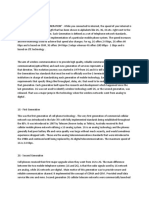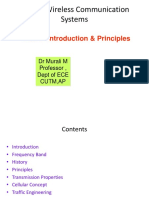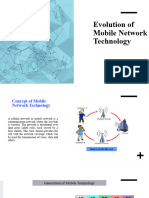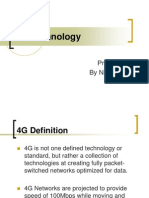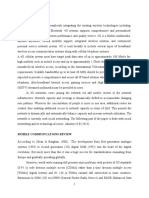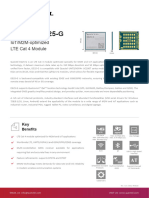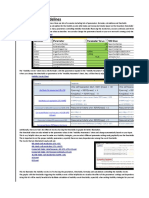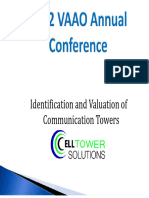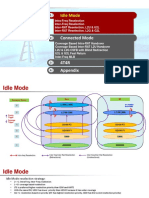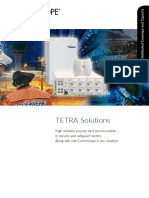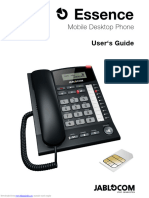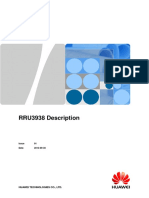0% found this document useful (0 votes)
60 views32 pagesMCN-Unit-1 - Cellular Concepts - Notes
The document discusses the evolution of mobile communication technologies through different generations (1G, 2G, 2.5G, 3G, 4G). It provides details on the key standards, technologies, features and services of each generation. The 1G network used analog technology for voice calls. 2G introduced digital networks and SMS. 2.5G added packet-switched data. 3G enabled high-speed internet access and video calls. 4G provides high-speed data and IP-based services on LTE networks.
Uploaded by
amey vermaCopyright
© © All Rights Reserved
We take content rights seriously. If you suspect this is your content, claim it here.
Available Formats
Download as DOCX, PDF, TXT or read online on Scribd
0% found this document useful (0 votes)
60 views32 pagesMCN-Unit-1 - Cellular Concepts - Notes
The document discusses the evolution of mobile communication technologies through different generations (1G, 2G, 2.5G, 3G, 4G). It provides details on the key standards, technologies, features and services of each generation. The 1G network used analog technology for voice calls. 2G introduced digital networks and SMS. 2.5G added packet-switched data. 3G enabled high-speed internet access and video calls. 4G provides high-speed data and IP-based services on LTE networks.
Uploaded by
amey vermaCopyright
© © All Rights Reserved
We take content rights seriously. If you suspect this is your content, claim it here.
Available Formats
Download as DOCX, PDF, TXT or read online on Scribd
/ 32










